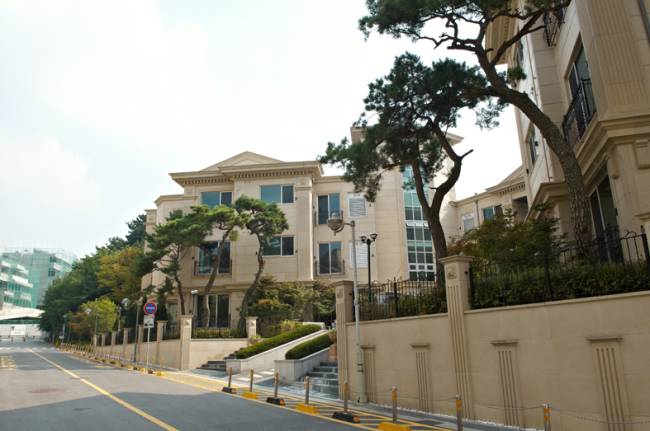[Weekender] Townhouses gain popularity beyond retirees
By Shin Ji-hyePublished : Dec. 12, 2014 - 21:27
Kim Won-sik, a 59-year-old Seoulite, is looking to move away from apartment living ahead of retirement next year. Like many other retirees, Kim also has a dream of spending the rest of his life in a house with natural surroundings and with a small yard where he can grow vegetables.
However, making the decision to move to the suburbs was not easy, as he would have to give up all the amenities and conveniences he enjoyed here in Seoul as well as his relatives and friends.
“As an alternative to moving to countryside, I am considering moving into a townhouse in the metropolitan area,” Kim said.
In recent years, many retirees like Kim or families who want to enjoy nature in cities, are seeking townhouses ― individual houses that are placed side-by-side ― which are mostly located in Gyeonggi Province, adjacent to Seoul.
However, making the decision to move to the suburbs was not easy, as he would have to give up all the amenities and conveniences he enjoyed here in Seoul as well as his relatives and friends.
“As an alternative to moving to countryside, I am considering moving into a townhouse in the metropolitan area,” Kim said.
In recent years, many retirees like Kim or families who want to enjoy nature in cities, are seeking townhouses ― individual houses that are placed side-by-side ― which are mostly located in Gyeonggi Province, adjacent to Seoul.

Townhouses originally emerged in the 17th century in the United Kingdom when noble families in countryside flocked to cities with the beginning of industrialization. As they were not able to own large properties due to expensive land prices, they built luxury townhouses in exclusive area where they could live near each other.
Here in Korea too, there are some wealthy families who seek townhouses for a similar reason.
Starclass, one of the high-end townhouses in Yongin City, Gyeonggi Province, costs over 1 billion won ($900,000).
Most residents, who are between their late 40s and early 60s, are affluent homeowners having at least 3 billion won in assets, according to Kukdong Engineering & Construction, the builder of the townhouses.
“The biggest reason they choose the townhouses is privacy. They want to live exclusively with only a few neighbors with similar living standards,” said Kim Yeon-jin, a marketing manager at the midsize builder.

There are also high demands for low- and middle-priced townhouses, which cost around 300 to 500 million won in Gyeonggi Province.
“The residents living in the affordable townhouses are mostly parents in their 30s and 40s, who have young children. They want their children to enjoy nature and play in yards,” said Joo Heung-chan, a marketing manager of Ollim Construction, which builds low- and mid-end townhouses in Pangyo, a newly-built planned city in Gyeonggi Province.
Families can also be free from noise complaint issues from downstairs neighbors, which has been a headache for many parents in Seoul where around half of its population live in apartment buildings.
In Korea, people have long considered houses as an investment. However, they are beginning to think of houses as living places as the property market slowdown prolongs, experts said.
“Despite the increasing purchasing power for houses, a growing number of people rent houses rather than purchase them. They also want to customize their houses more as they view houses as living places rather than investments,” said Kim Sun-duk, a manager of Construction Industry Strategy Research Center.
By Shin Ji-hye (shinjh@heraldcorp.com)








![[KH Explains] Hyundai's full hybrid edge to pay off amid slow transition to pure EVs](http://res.heraldm.com/phpwas/restmb_idxmake.php?idx=644&simg=/content/image/2024/04/18/20240418050645_0.jpg&u=20240419100350)







![[From the Scene] Monks, Buddhists hail return of remains of Buddhas](http://res.heraldm.com/phpwas/restmb_idxmake.php?idx=652&simg=/content/image/2024/04/19/20240419050617_0.jpg&u=20240419175937)

![[KH Explains] Hyundai's full hybrid edge to pay off amid slow transition to pure EVs](http://res.heraldm.com/phpwas/restmb_idxmake.php?idx=652&simg=/content/image/2024/04/18/20240418050645_0.jpg&u=20240419100350)

![[Today’s K-pop] Illit drops debut single remix](http://res.heraldm.com/phpwas/restmb_idxmake.php?idx=642&simg=/content/image/2024/04/19/20240419050612_0.jpg&u=)